Episode #386: Leading Without Authority: How Coaches Can Activate Math Leadership in Schools
LISTEN NOW HERE…
WATCH NOW…
We know school administrators play a crucial role in driving long-term math improvement—but what happens when you’re a coach or teacher leader trying to create change without formal authority?
In this episode, we dive into the practical side of leading from the middle. If you’re trying to build a team, clarify roles, and move math goals forward—this conversation is for you. You’ll hear actionable ideas for engaging principals in the work, building shared ownership, and creating momentum even when it feels like the responsibility falls on your shoulders.
Because here’s the truth: sustainable change doesn’t happen alone—and if you’re waiting for someone else to set up the team, it might never happen.
Key Takeaways:
- How to lead from the middle and engage administrators without formal authority
- Why shared ownership is critical for sustainable school-level change
- Practical strategies to build teams, clarify roles, and establish shared responsibility
- What coaches can do today to influence leadership alignment around math goals
- Real talk about what happens when you wait for someone else to lead the work
Attention District Math Leaders:
Not sure what matters most when designing math improvement plans? Take this assessment and get a free customized report: https://makemathmoments.com/grow/
Ready to design your math improvement plan with guidance, support and using structure? Learn how to follow our 4 stage process. https://growyourmathprogram.com
Looking to supplement your curriculum with problem based lessons and units? Make Math Moments Problem Based Lessons & Units
Be Our Next Podcast Guest!
Join as an Interview Guest or on a Mentoring Moment Call
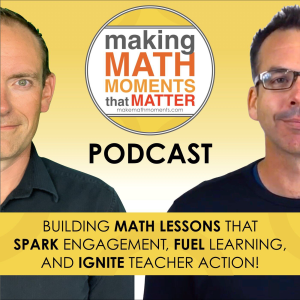
Apply to be a Featured Interview Guest
Book a Mentoring Moment Coaching Call
Are You an Official Math Moment Maker?
FULL TRANSCRIPT
Jon Orr: Last week in our Thursday episode, episode that are, you those episodes are specifically dedicated and not to say dedicated, but we are speaking primarily to our coaches, our administrators, our leaders, our classroom leaders, specifically, you know, aiming towards improvement in their math systems, their math programming, their math classrooms as a kind of a grouping. be your department, could be a, you know, be a department chair. So we’re just talking about leadership and mathematics specifically. And last,
last Thursday’s episode. if you listened in a row here on our Thursday episodes or we rounded two episodes back, we were specifically unpacking an assessment that our principals and our administrators can be using at the school level to unpack and thinking about their own roles in math improvement. And so we kind of walk through with that rubric. looked like, like, what does it look like when we’re, you know,
implementing and structuring and supporting math well at say level four on this assessment versus where we might be or where we could be say at a level one or at level two on the assessment. And we kind of ended that episode with one big question, you know, that said, what happens if I’m listening to this episode right now and I’m not an administrator? I am a coach. I’m a department chair. I’m a classroom teacher, but I know that the administrator
plays a pivotal role in the support of what we’re trying to do in mathematics. how do I help my administrator think of this, say, this assessment or think about some of the key moves that we all need to be working towards? Basically, how do we help bring our administrators and support them in bringing them on board when we know we’re not them and we also know not their supervisor? We’re say, you know, their, supervisor, which I think, you know,
The question is, how do I coach upwards? How do I help them see that this is important without stepping on toes or being offensive? So that was the big question. What do we do specifically to kind coach our administrators to go down this way with math? And that’s what we’re gonna talk about here today. So let’s dig in.
Yvette Lehman: So this is a great question. think you’re reading a book recently, John, called Leading Without Authority or something along those lines of the title. And I’ve been thinking about that a lot lately. How do you, like you said, I want to engage. I know that that role is critical in the sustained work that we’re trying to achieve, but it can also be very off-putting if I don’t go about it in the right way. Right? If I come in as
I know it all or I come in with a lot of authority, even though, you know, in this dynamic, the principal has the authority. This can go like really south really quickly. And then we talk all the time about relationships, like relationships and coaching. So I think that the same applies just like we build relationships with teacher in the classroom. We also have to build a relationship with the principal that we’re trying to bring on board.
probably starting by just inviting them to the table or inviting them to the student desk. Like wherever the work is happening, we talk about this all the time. Like we need to go to the work. Yeah, that’s right. So we’ve referenced that a few times. It’s like, oftentimes we stay too far from the work and we get really caught up in, we talk about this all the time, know, putting out fires or prioritizing the wrong things. And so,
Step one, if this was me and I was in this position is I would invite them to the table or bring them to the classroom. Open the door.
Kyle Pearce: You know, I think that’s a great first move. And I think what you’re hoping to achieve in doing so is that they have their own epiphany along the way. And I think everything we’re going to talk about in this episode really comes down to helping to create the conditions for the leader to want to engage in the work. Because right away, I can imagine someone’s listening and saying like,
I have invited, you know, them to be a part of the work, but they’re too busy or or perceived to be too busy or, you know, they have good intentions or, you know, all of these things along the way. you know, inviting them into the work, inviting them to be a part of the learning, inviting them to be a learner and being, you know, willing to kind of put down their their guard a little bit to say, like, I’m actually may not.
have a ton of math background knowledge to be able to contribute here, but I’m willing to do this learning alongside you. That’s such a great move, and it’s so important. But it can still be difficult, because really everything we’re going to have to try to do is really going to be around building that relationship, as you’ve already mentioned, and really trying to provide opportunities for them to value what’s going on.
And really that’s going to be key here is that, you know, what, what is it that we’re actually trying to do here? And we have to have that value, but we can’t force it. And that’s, you know, I don’t know if it’s step number two, or if it’s maybe step zero is really being as mentor like as you possibly can, whether it’s been asked for or not, because if we come in and we tried to tell, we usually don’t get a favorable result. So it’s going to be
these little tiny micro moves along the way that are going to hopefully nudge them towards having this epiphany that the work is valuable. I can’t just tell someone the work is valuable. We have to find ways to allow them to experience it, which I think is so key. John, you’ve been in a position where you were in the classroom, you were a math chair, a math department head.
how, you know, what sort of barriers were you running up against and you know, how did you try to get some folks that are maybe up the ladder from where you were in order to engage in the work?
Jon Orr: Yeah, I got three big points I think I do want to make around this. one is kind of going back to what we talk about a lot here on these Thursday episodes, which is like vision. Like what is it? What is the goal? Like what’s the why here? Like why do I want my administrator to be part of this process? Am I clear on what it is that I want them to do or to support with?
Like, it just to like, just get awareness? And that might be your why. But I mean, like now it’s like, well, what does that look like? Like, just go down, like unpack that. Like, okay, if my goal is to create awareness, what will that lead to? And what will that lead to? And then what is the actual expectations I’m really looking for? Like, I think you wanted to find that part, but before you begin this process of like trying to…
bring them on on board of like trying to make sure that you’re created this alignment in terms of math instruction in your school or school systems is if you know that they have in a way it’s always been downloaded to the math department chair or the math coaches then you know that this is an important relationship. I think you just want to have like clarity on what it is you’re hoping to do by the end of the year, the end of two years, three years. Like what is it really that you’re trying to do here? And I would encourage you write it out like
you know, brainstorm that work. And if you’re in solo because you’re that coach, then brainstorm that solo. But I think that’s the first piece that I think we really need to be clear on is just get clear. Like what is it you’re trying to do in math instruction and what do you feel like that role is? And that’s where that assessment can come in, right? That assessment can help you get clear on like, I’m aiming for like level two this year, which really just means like, I want my administrator to do this, this and this. And so that part would be, you know, my first kind of big
know, step to take or I guess it’s a small step but also a big step at the same time. The second and third kind of point I want to make around this is comes from the book Leading Without Authority, which is written by Keith Farazi. The subtitle is How the New Power of Co-Elevation Can Break Down Silos, Transform Teams, and Reinvent Collaboration. This is a book that I’ve read recently.
And there are two pieces that kind of stand out to me specifically that I think pertain to us in education, especially in this realm of trying to help the people that we’re coaching up. Because the book unpacks this. Like how do I co-elevate? That’s the main theory of the book is how do I co-elevate the people that are around me, whether they’re my direct superiors or supervisors, or whether they’re say department people who are in parallel for the work I do, but aren’t say specifically relevant in math.
And the first kind of big point that is made in the book, which is really saying identify your team. first, just identify that your administrator plays a huge role here. Like that’s an important part. So then it’s like, now we can get clear on like what that’s gonna look like. But identify that your administrator or your assistant superintendent or.
Maybe you’re the teacher and you have to then talk about with the math department chair who is on the team and in the book they define the team to be anyone who would make it easier for you to achieve your goals. So that might be, you know, the English, you know, the department chair, because maybe all of sudden you can help them and they can help you and you can start to co-elevate each other.
to help you reach your goals and you can reach them. It’s like about establishing relationships, but really just identify who are the relationships that I have to build with? who are those people I have to build those relationships with so that I’m forming this tight bond? Because you do have to realize that. You do have to realize that your administrator, your assistant superintendent, your department chair, all of these people should be on your team for math instruction. you can’t take that step saying like, but I’m not there.
I’m their teacher, I’m not their supervisor, so I have to like, kind of take a step back. No, identify that they are on the team and that they should be, you know, looked at as the team as a relationship building around what you’re doing in math, which means like going back to what you, you you were saying by saying like, let’s give them a glimpse, let’s invite them to the classroom. Like all those moves are after you’ve identified that they’re part of your team.
So in the third part here, which is the second part of the book that I feel like is a really big takeaway, which is coming to terms that if you’re leading math instruction and it’s always been downloaded to you, that you own this work. Like it’s on you to make this happen because if you could take the step that says like, well, I’m not the administrator, but then when you take that attitude, it’s not gonna get done. Like it’s not going to happen the way you want it to happen.
So you have to kind of own the fact that this relationship building is going to be on you if you want this to be a thing and you want this to form the the the co-elevation that’s going to happen or the alignment that’s going to happen at the department level, at the school level, at the district level. You could be a district coach and knowing that your superintendent has always been like you handle the math, I’ll do all this stuff over here, but you know it’s so more impactful because they can provide the right pressure when we need. But you’ve got to own it that
You’re gonna need to bring them in and you have to just say that this is this is the thing that I have to take spearhead and own this Otherwise, I know it won’t get done and that was that’s a really big lesson I think we have to learn but we also have to own it
Yvette Lehman: that idea. I feel like I just had an epiphany because we often, it’s funny that you say that, nobody is probably thinking more about math instruction than you. You know, the people doing this work, the coaches, the coordinators, nobody is spending the same amount of energy, nor do they feel it’s as big of a priority. So you’re the only one who probably is willing, able, positioned to get this ball rolling. And if not you, then who?
So I love that idea, but what’s actually really interesting about what you just said is right now you own this work. The coach owns this work, the coordinator owns this work, but what we want is shared ownership. We often talk about this idea that, you know, if that one coach left the district, left the school, you know, moved into a different position within the organization, does the work go with them? And probably right now.
Jon Orr: Right. I think it’s, you’re right. Yeah, the ownership there is slightly nuanced, right? It’s like, I don’t wanna own this work, but I own the responsibility to make it co-owned, right? Like I have to own that it’s on my shoulders to create this environment, otherwise it won’t exist. But my goal is to have the co-shared, co-owned alignment.
Kyle Pearce: Yeah, and it made me think as well that, you know, you’re in this position where you may not have the final say on something because you are further down, you know, the the ladder. However, you sort of are holding this work and you’re you’re the one keeping the work alive in this moment. And like you were saying, you want it to be more of a group effort so that if and when it’s not an if, but when you move on.
right? Be it into a different role and do a, you know, maybe retiring, whatever it is that you’re doing that it doesn’t die with you. So that’s sort of like the goal. And, know, a part that I think is really, I think it’s gonna, it’s gonna sound very easy, it’s gonna sound very basic, but it’s really important, I think is when you’re working with that administrator, that superintendent or that, you know, the person who is above you in the ranking order is actually
not only building that relationship, but being able to have the conversation with them that you need them to do blank, right? I need you to help to do blank, right? And you get to fill in the blank on what that is, but it might be like, I need you, like the word need when the administrator feels needed and wanted and that they actually have, here’s the part that we don’t know is that sometimes
individuals in certain leadership roles don’t feel like they have something they can offer because maybe the content knowledge isn’t there or maybe they don’t have the same experience as you do. But they do have the final say. They also have a lot of really important, you know, opportunities to help staff rally, right? And we see all the research that when the administrator is behind the work that
the outcomes are much more impactful, right? And just opening up and saying what it is that you need them to do to help you with the work, you can become a great team where it doesn’t mean that now you all of a sudden you’re on the same, you know, order in terms of authority or, you know, leadership rank, so to speak.
But you do have the opportunity to work together strategically. And I think as long as we let them know explicitly that we need them and how we need them in order to push this work forward, I feel that most leaders, because they are leaders and they got there for a reason, are going to be seriously inclined to want to help you get there.
Yvette Lehman: my takeaways from this conversation. Cause I don’t know if our listeners know that sometimes we haven’t had this conversation before we actually hit record. We’re just, yeah, we’re just learning in the moment. So I feel like I’ve had a, I have had epiphanies in this conversation. I love the idea of recognizing that if this is what we want, if we know that this is a critical step, we are responsible for making it happen. So right now you may own the work.
You may recognize that bringing your principal, your superintendent, other district leaders on board is critical. So that kind of falls on you at this time to make that happen. I think that reminding people of their value, right? Like I often say, like typically when people feel valued, they step up. So helping them understand how important they are to the systemic change that you’re hoping to see the sustainable change. And I wanted to leave everybody with like a practical
First step, like I’m picturing you’re this person, you’re a coach, you’re in a school, and you want to start this conversation. You want to have that initial conversation with your principal, with your department chair. I love the magic wand wishlist activity for that initial conversation because step one is to recognize that we all want the same things, right? Like the outcome that we’re all striving for is the same.
And that’s a really great way to start the conversation and saying, okay, if that’s what we all want, how are we going to get there? And what are the roles and responsibilities for everybody on this team?
Jon Orr: it. Love it. We’re going to add the Magic Wand wish list and activity that we do with our school partners, our district partners, when we start engaging in the vision work that’s necessary for aligned and sustainable math improvement plans. We’ll put that in the show notes. You can get a copy of the Magic Wand wish list activity. You can do that with your principals. Great kind of suggestion there, Yvette. Just a quick recap. Some of the ideas that we shared here specifically were, you know, the Magic Wand wish list, reminding people that they’re
of value and they have value to this work. Realizing that you own the work. If you want this work to happen, realize that you’re the one that’s gonna take that step to make it happen. Don’t wait for someone else to take it if you want it. Identify the team. Identify the key players that actually will help you get to where you want to go and then create those relationships with those people.
And Kyle, know, or some of those first steps there was like, invite them to the classroom. Let’s get a shared experience here. Let’s get people, you know, seeing what we want them to see so that we can do all those other things. So hopefully those are some steps that we can be taking to coach up or coach sideways or help bring, you know, co-elevation into the school system that you’re currently working with.
Thanks For Listening
- Book a Math Mentoring Moment
- Apply to be a Featured Interview Guest
- Leave a note in the comment section below.
- Share this show on Twitter, or Facebook.
To help out the show:
- Leave an honest review on iTunes. Your ratings and reviews really help and we read each one.
- Subscribe on iTunes, Google Play, and Spotify.
DOWNLOAD THE 3 ACT MATH TASK TIP SHEET SO THEY RUN WITHOUT A HITCH!
Download the 2-page printable 3 Act Math Tip Sheet to ensure that you have the best start to your journey using 3 Act math Tasks to spark curiosity and fuel sense making in your math classroom!
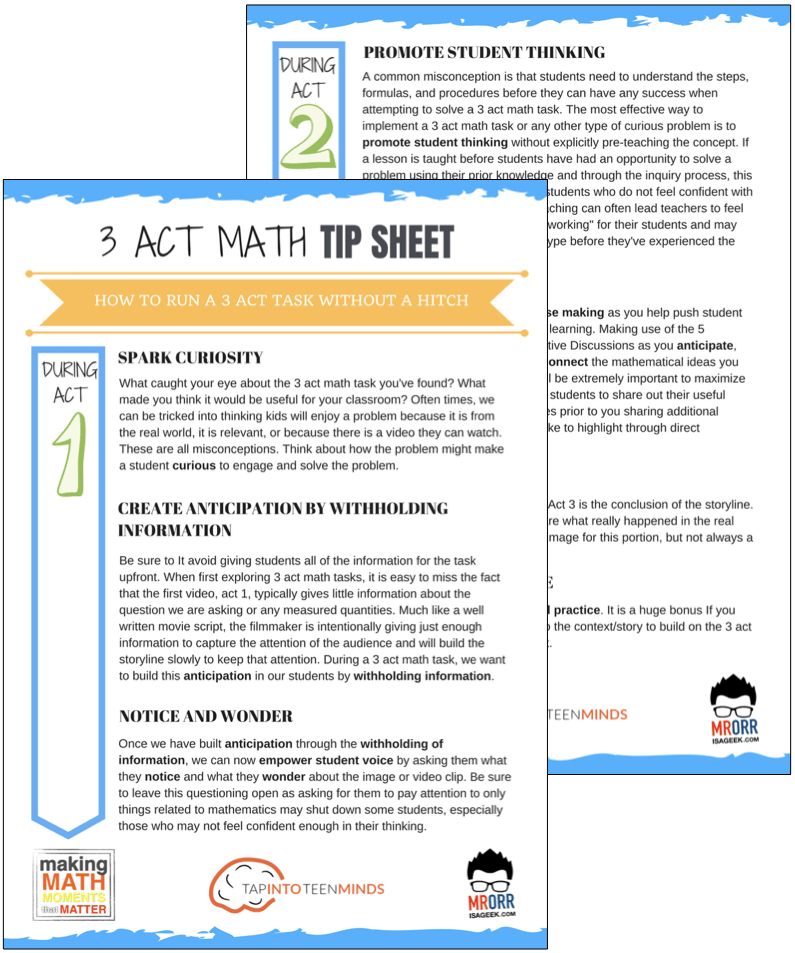
LESSONS TO MAKE MATH MOMENTS
Each lesson consists of:
Each Make Math Moments Problem Based Lesson consists of a Teacher Guide to lead you step-by-step through the planning process to ensure your lesson runs without a hitch!
Each Teacher Guide consists of:
- Intentionality of the lesson;
- A step-by-step walk through of each phase of the lesson;
- Visuals, animations, and videos unpacking big ideas, strategies, and models we intend to emerge during the lesson;
- Sample student approaches to assist in anticipating what your students might do;
- Resources and downloads including Keynote, Powerpoint, Media Files, and Teacher Guide printable PDF; and,
- Much more!
Each Make Math Moments Problem Based Lesson begins with a story, visual, video, or other method to Spark Curiosity through context.
Students will often Notice and Wonder before making an estimate to draw them in and invest in the problem.
After student voice has been heard and acknowledged, we will set students off on a Productive Struggle via a prompt related to the Spark context.
These prompts are given each lesson with the following conditions:
- No calculators are to be used; and,
- Students are to focus on how they can convince their math community that their solution is valid.
Students are left to engage in a productive struggle as the facilitator circulates to observe and engage in conversation as a means of assessing formatively.
The facilitator is instructed through the Teacher Guide on what specific strategies and models could be used to make connections and consolidate the learning from the lesson.
Often times, animations and walk through videos are provided in the Teacher Guide to assist with planning and delivering the consolidation.
A review image, video, or animation is provided as a conclusion to the task from the lesson.
While this might feel like a natural ending to the context students have been exploring, it is just the beginning as we look to leverage this context via extensions and additional lessons to dig deeper.
At the end of each lesson, consolidation prompts and/or extensions are crafted for students to purposefully practice and demonstrate their current understanding.
Facilitators are encouraged to collect these consolidation prompts as a means to engage in the assessment process and inform next moves for instruction.
In multi-day units of study, Math Talks are crafted to help build on the thinking from the previous day and build towards the next step in the developmental progression of the concept(s) we are exploring.
Each Math Talk is constructed as a string of related problems that build with intentionality to emerge specific big ideas, strategies, and mathematical models.
Make Math Moments Problem Based Lessons and Day 1 Teacher Guides are openly available for you to leverage and use with your students without becoming a Make Math Moments Academy Member.
Use our OPEN ACCESS multi-day problem based units!
Make Math Moments Problem Based Lessons and Day 1 Teacher Guides are openly available for you to leverage and use with your students without becoming a Make Math Moments Academy Member.
Partitive Division Resulting in a Fraction
Equivalence and Algebraic Substitution
Represent Categorical Data & Explore Mean
Downloadable resources including blackline masters, handouts, printable Tips Sheets, slide shows, and media files do require a Make Math Moments Academy Membership.
ONLINE WORKSHOP REGISTRATION
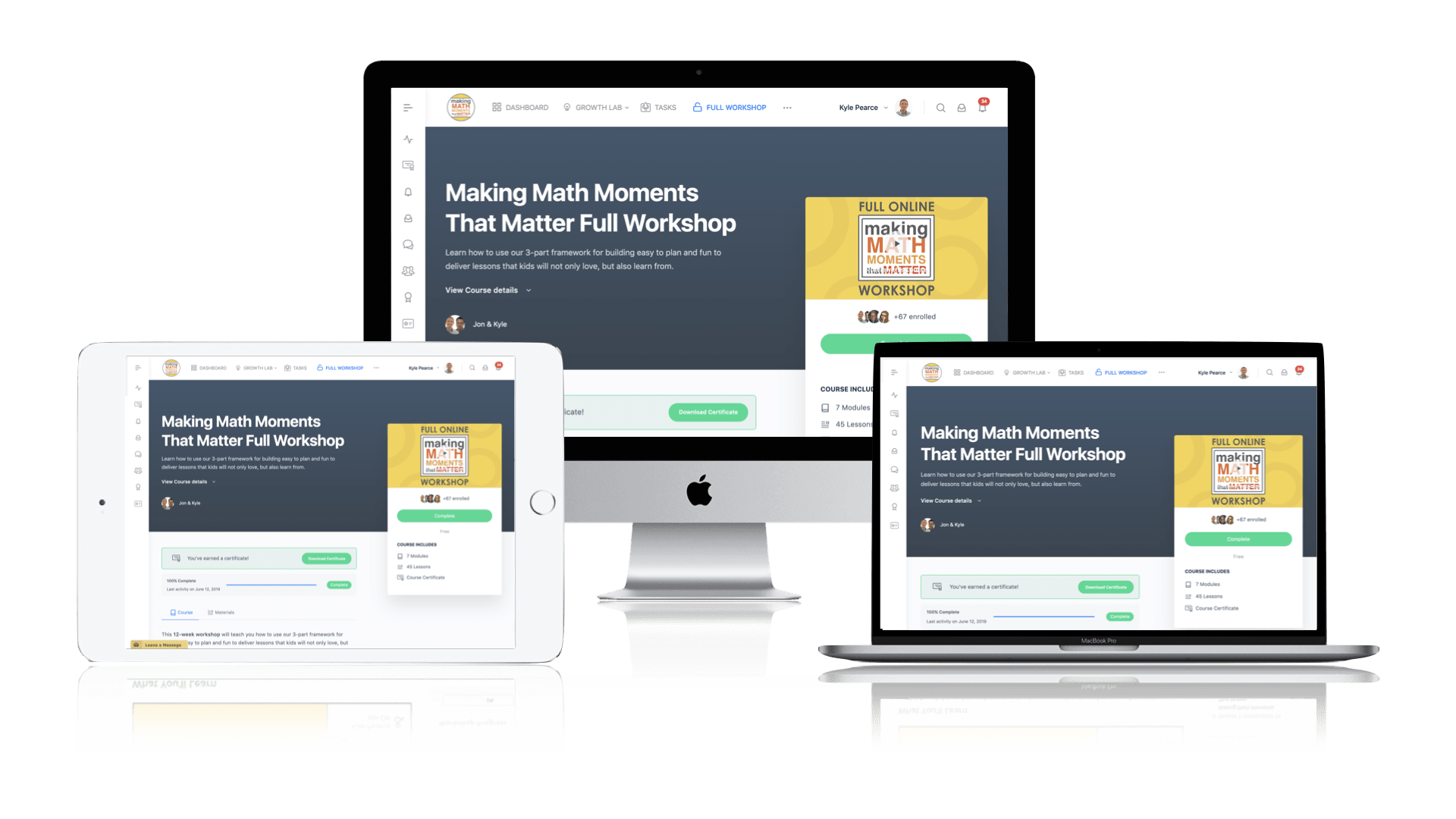
Pedagogically aligned for teachers of K through Grade 12 with content specific examples from Grades 3 through Grade 10.
In our self-paced, 12-week Online Workshop, you'll learn how to craft new and transform your current lessons to Spark Curiosity, Fuel Sense Making, and Ignite Your Teacher Moves to promote resilient problem solvers.
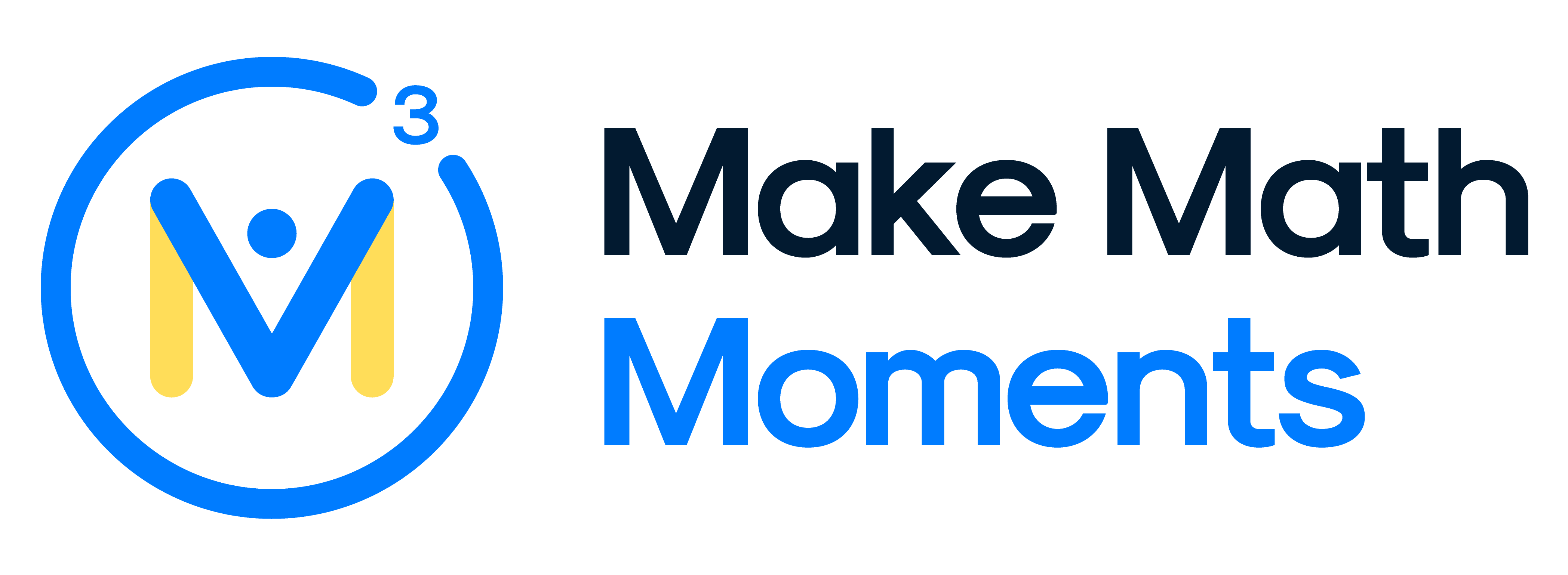



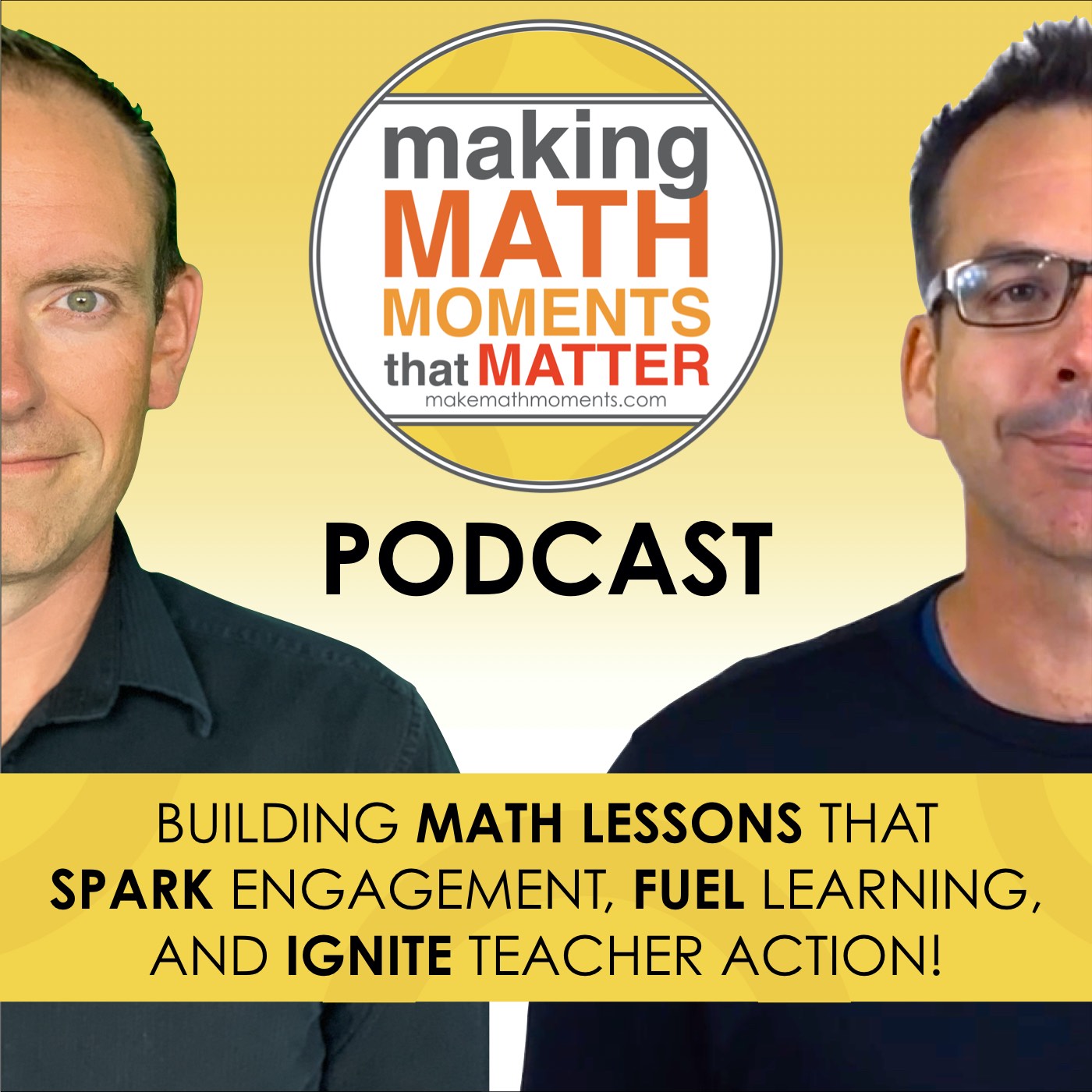
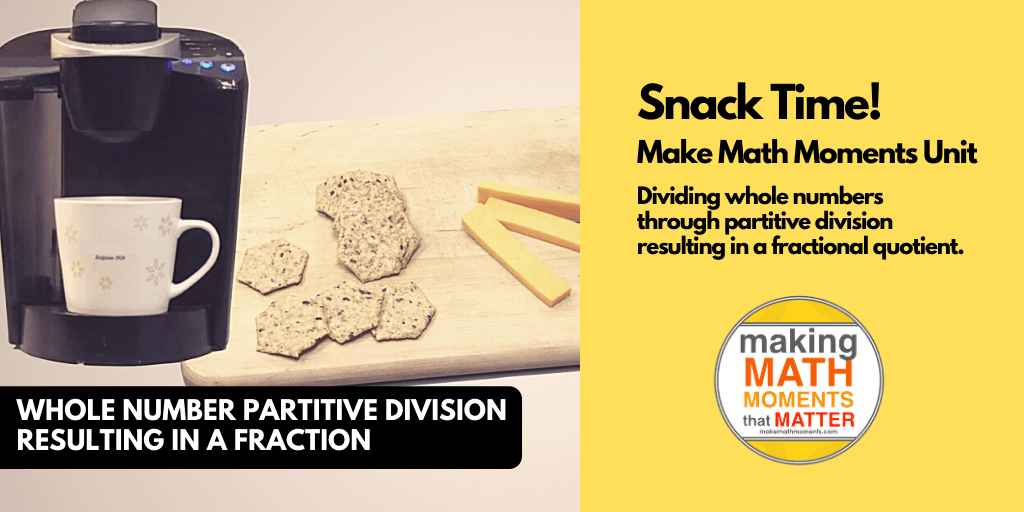
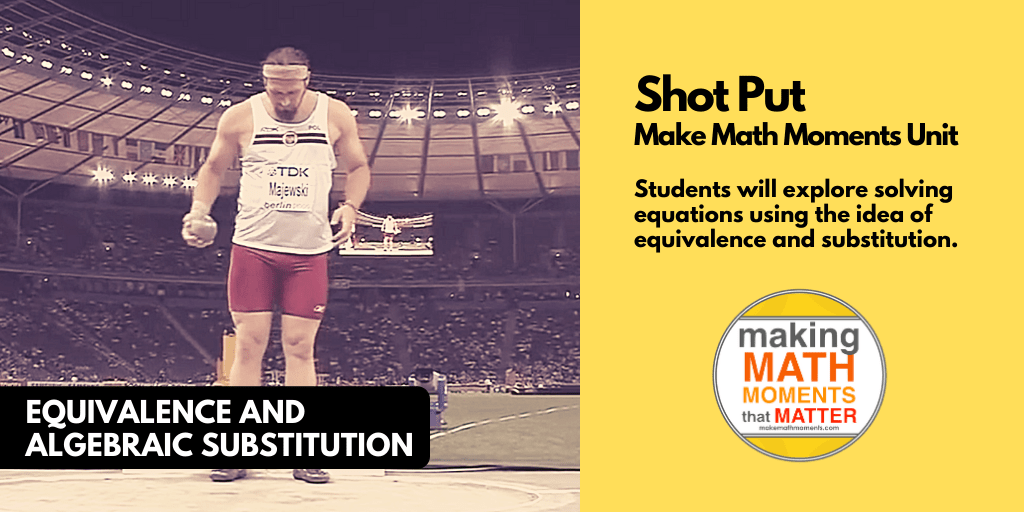
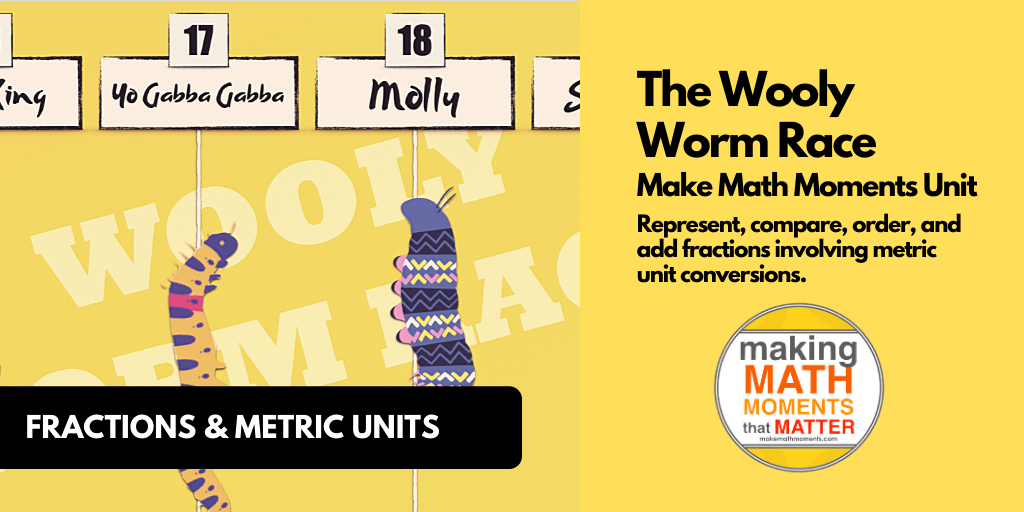
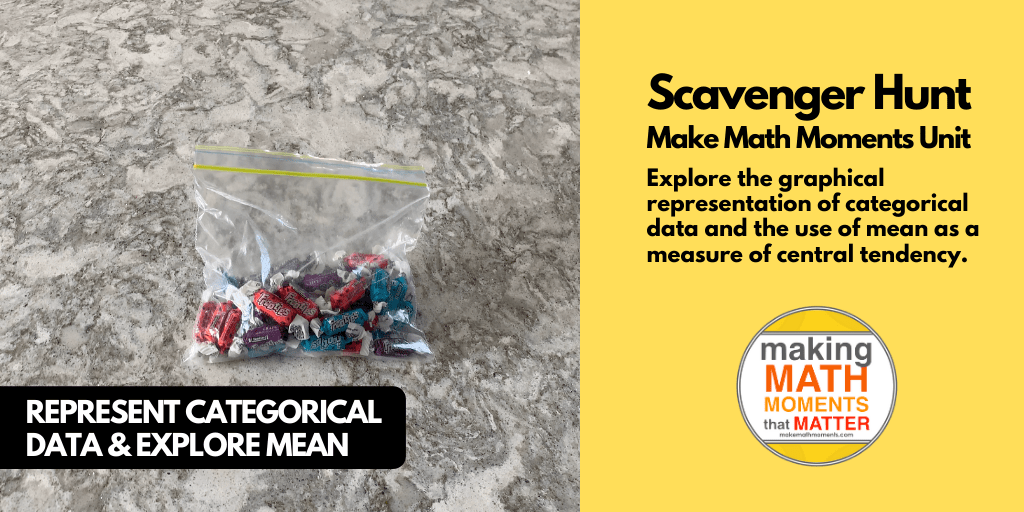

0 Comments